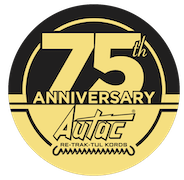A coil cable, also known as a coiled or retractable cable, is a type of cable that features a spiral or spring-like structure. Unlike standard straight cables, coil cables can stretch and retract, making them ideal for applications where flexibility and space-saving are crucial. These cables are commonly found in industries such as electronics, telecommunications, automotive, and healthcare.
Benefits of Coil Cables
- Flexibility and Stretchability
- Coil cables can extend when needed and retract back to their original shape, reducing cable clutter and tangling.
- Space-Saving Design
- Since they return to their coiled form, they take up less space compared to traditional straight cables.
- Durability and Longevity
- Made from high-quality materials such as polyurethane or PVC, coil cables are resistant to wear and tear, ensuring a longer lifespan.
- Enhanced Aesthetic and Organization
- Ideal for keeping workspaces tidy, especially in professional or home office setups.
- Improved Mobility and Ease of Use
- Perfect for situations where cables need to move freely, such as in medical equipment or industrial machinery.
Why Proper Cable Coiling Matters?
Coiling cables the right way prevents tangling, extends their lifespan, and ensures easy access when needed. Poorly coiled cables can develop kinks, internal wire damage, or breakage over time. Whether you’re dealing with power cords, extension cables, or audio and video cables, using the right method keeps them in good condition.
Best Techniques to Coil Cables Properly
1. Over-Under Method (Ideal for Audio, Video, and Power Cables)
This is the best method for avoiding twists and tangles. It helps cables lay flat when uncoiled.
How to Do It:
- Hold one end of the cable in your hand.
- Make the first loop in a natural direction.
- For the second loop, twist the cable in the opposite direction (this is the “under” part).
- Continue alternating between “over” and “under” until fully coiled.
- Secure with Velcro or a cable tie.
Best for: Audio/video cables, power cords, and fiber-optic cables.
2. Figure-Eight Wrap (Best for Long Cables and Extension Cords)
This method prevents strain and tangles, especially for longer cables.
How to Do It:
- Find the middle point of the cable.
- Create a loop and then cross the next loop over to form a figure-eight shape.
- Keep alternating sides until the cable is fully wrapped.
- Tie the center with a strap or Velcro.
Best for: Extension cords, long power cables, and large-diameter cables.
3. The Roadie Wrap (Perfect for Professionals & Stage Equipment)
Used by sound engineers and professionals, this method prevents internal cable damage.
How to Do It:
- Hold the cable end and make a natural loop.
- Twist the next loop in reverse to maintain the natural lay of the cable.
- Keep alternating directions while looping.
- Secure the coil with a Velcro strap or tie.
Best for: Microphone cables, instrument cables, and heavy-duty power cords.
4. Loop & Twist Method (Quick & Simple for Small Cables)
A fast method for everyday cables like phone chargers and USB cords.
How to Do It:
- Hold one end and loop the cable naturally.
- Once fully looped, twist it around itself to lock it.
- Use a rubber band or cable tie to hold it in place.
Common Applications of Coil Cables
- Electronics & Audio Equipment – Used in headphone cables, microphones, and instrument cables for musicians.
- Automotive Industry – Found in car chargers, dashboard wiring, and vehicle diagnostic equipment.
- Medical Equipment – Used in hospital monitoring systems, surgical tools, and diagnostic devices.
- Industrial & Manufacturing – Provides flexibility for robotic arms, conveyor belts, and factory automation systems.
- Telecommunication & Office Use – Common in landline phone cords and office equipment to prevent cable tangling.
How to Choose the Right Coil Cable?
When selecting a coil cable, consider the following factors:
- Material Composition – Look for cables made of high-quality polyurethane or PVC for added flexibility and durability.
- Length & Extension Range – Choose a cable that meets your required stretch length without compromising performance.
- Wire Gauge & Conductivity – Ensure the cable has the appropriate gauge and shielding for your application.
- Connector Types – Check compatibility with your devices, whether it’s USB, audio jacks, or power connectors.
- Temperature & Environmental Resistance – If used in industrial or outdoor settings, opt for cables with resistance to heat, moisture, and chemicals.
Maintaining and Caring for Coil Cables
- Avoid Overstretching – Excessive stretching may cause permanent deformation or reduced elasticity.
- Store Properly – Keep cables in a cool, dry place when not in use to prevent wear.
- Clean Regularly – Wipe with a soft cloth to remove dust and debris, especially for cables used in industrial or medical environments.
Tips for Storing Coiled Cables
- Use Velcro straps or reusable ties instead of rubber bands to avoid damage.
- Label cables to quickly identify them when needed.
- Store cables in a dry, cool place to prevent overheating or moisture damage.
- Invest in retractable cable reels for frequently used extension cords.
Frequently Asked Question About Coil Cables
1. What is the best way to coil cables to prevent tangling?
The Over-Under Method is the best technique to prevent tangling and kinking. It involves alternating the direction of each loop, keeping the cable relaxed and easy to uncoil without knots.
2. Why do cables get damaged when coiled improperly?
Improper coiling can cause internal wire stress, kinks, and breakage, especially with stiff or delicate cables. Twisting the cable too tightly or wrapping it around your arm can damage the insulation and shorten its lifespan.
3. How can I store coiled cables efficiently?
To store coiled cables properly, use Velcro straps, cable ties, or storage reels. Avoid rubber bands, as they can degrade over time and stick to the cable. Labeling your cables and using a dedicated storage box can also help with organization.
4. Is there a difference between coiling power cables and audio cables?
Yes. Power cables can handle tighter loops, but audio and video cables require looser, more careful coiling (such as the Over-Under or Roadie Wrap method) to avoid signal interference or wire damage.
5. What are retractable cable reels, and are they worth it?
Retractable cable reels automatically wind and store cables neatly, preventing tangling and damage. They are especially useful for extension cords, air hoses, and professional audio/video setups where frequent cable deployment and storage are needed.
Conclusion!!
Coil cables are a practical solution for various industries, offering flexibility, durability, and space-saving benefits. Whether you need a reliable cable for audio, automotive, medical, or industrial applications, investing in a high-quality coil cable ensures efficiency and longevity. By choosing the right material, length, and specifications, you can optimize cable performance and maintain a clutter-free setup.




Recent Comments